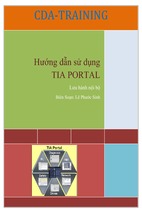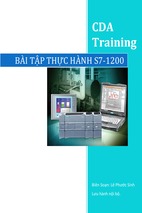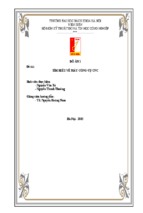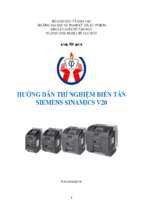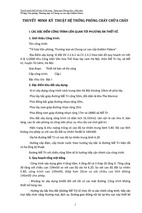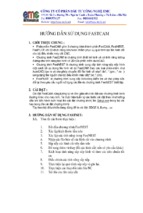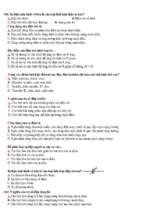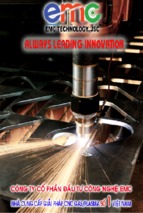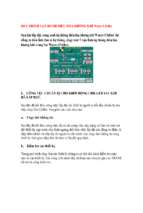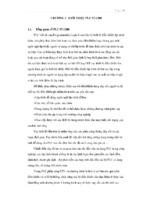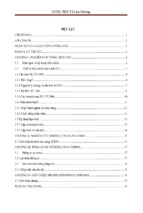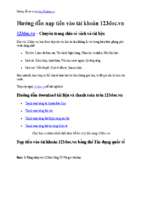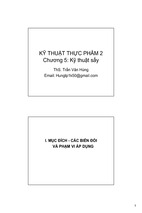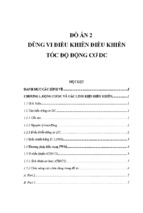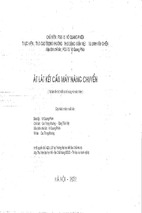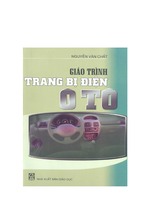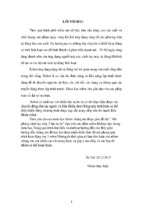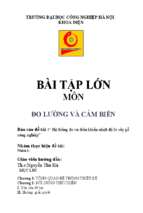K
O
L
L
E
G
Training package "SENSORIC"
Manual for theory
1
Introduction
2
Inductive Sensors
2.1
Fundamental Principles
2.1.1
2.1.2
2.1.3
2.1.4
2.1.4.1
2.1.4.2
2.1.5
Basic Construction
Reduction Factor
Coil Size and Sensing Range
Installation Problems
Housing
Flush Mounting
Electronic Circuit
2.2
Types
2.21
2.2.1.1
2.2.2
2.2.3
2.2.4
2.2.5
2.2.6
2.2.7
Cylindrical and Rectangular proximity switches
Definitions
Slotted Types
Ring Types
Bistable Switches
Sensors for use in Welding Magnetic Fields
Sensors to distinguish between different materials
Inductive Analogue Sensors
2.3
Interfaces for Inductive Proximity Switches
2.3.1
2.3.1.1
2.3.1.2
2.3.1.3
2.3.2
2.3.2.1
2.3.2.2
2.3.2.3
2.3.3
2.3.4
Electrical Types and their Positive Effects
Direct Current Switches
Alternating and All voltage Switches
Sensors to DIN 19234 (NAMUR)
Protected and Safety Switches
Reverse Polarity and Over Voltage Protection
Overload Protection
Safety Circuits
Loads and their Characteristics
Bus Connection
2.4
Manufacturing Technology
2.5
Applications
1
© PEPPERL+FUCHS Kolleg GmbH, Königsberger Allee 87, 68301 Mannheim
3
Capacitive Sensors
3.1
3.1.1
3.1.2
3.1.3
Fundamental Principles
Sensor Construction
Sensitivity
Reduction Factor
3.2
3.2.1
3.2.2
3.2.2.1
3.2.2.2
3.2.2.3
3.3.3
Practical Model
RC Oscillator
Interference Suppression
Interference Effects
Contamination Compensation
Cutting out Interference Pulses
Models
3.3
Applications
4
Ultrasonic Sensors
4.1
4.1.1
4.1.2
4.1.2.1
4.1.2.2
4.1.2.3
4.1.2.4
Fundamental Principles
Propagation of Sound Waves in Air
Generation of Ultrasonic Waves
Electrostatic Converter
Bending Oscillator
Membrane Oscillator
L/4- Oscillator
4.2
P&F- Oscillator
4.3
Methods of Operation
4.4
Distance Measuring Ultrasonic Sensors
4.5
Ultrasonic Sensors in Through-Beam Mode
4.6
Possible Errors in distance measurements with Ultrasonic Sensors
4.7
Operating Conditions
4.8
Sensor Types
4.9
Applications
2
© PEPPERL+FUCHS Kolleg GmbH, Königsberger Allee 87, 68301 Mannheim
5
Photoelectric Sensors
5.1
5.1.1
5.1.1.1
5.1.1.2
5.1.2
5.1.2.1
5.1.2.2
5.1.2.3
Fundamental Principles
Emitter Element
Light Emitting Diodes
Solid State Laser Diodes
Receiver Element
Photodiodes
Phototransistors
Position Sensitive Diode
5.2
5.2.1
5.2.2
5.2.3
Methods of Operation of Photoelectric Sensors
Direct Detection Photoelectric Sensor
Reflex Photoelectric Sensor
Through-Beam Photoelectric Sensor
5.3
5.3.1
5.3.2
5.3.2.1
5.3.2.2
5.3.2.3
5.3.2.4
5.3.3
5.3.3.1
5.3.3.2
5.3.4
Signal Processing in Photoelectric Sensors
Interference with Photoelectric Sensors
Stages in the Interference Suppression
Interference Suppression using Optical Modulation
Interference Suppression with Band Pass
Interference Suppression using Blanking
Interference Suppression using Digital Filtering
Function Reserve
Static Function Reserve
Dynamic Function Reserve
Protection against Mutual Interaction
5.4
5.4.1
5.4.1.1
5.4.1.2
5.4.1.3
5.4.2
5.4.3
5.4.3.1
5.4.3.1.1
5.4.3.1.2
5.4.3.1.3
5.4.3.2
5.4.4
Types
Reflex Photoelectric Sensor with Polarising Filter
Polarising Filter
Retro-Reflector
Through-Beam Detection
Direct Detection Photoelectric Sensor with Background Screening
Direct Detection Photoelectric Sensor with Light Guides
Light Guides
Principle of Operation
Glass Fibre Light Guides
Plastic Light Guides
Sensors with Light Guides
Output Stage of Photoelectric Sensors
5.5
Triangulation Sensors
5.6
Phase Correlation Sensors
5.7
Applications
3
© PEPPERL+FUCHS Kolleg GmbH, Königsberger Allee 87, 68301 Mannheim
6
Magnetic Sensors
6.1
Fundamental Principles
6.2
6.2.1
6.2.2
Principal of Operation
Hall Effect Sensors
Magnetic Resistive Sensors
6.3
6.3.1
6.3.2
6.3.2.1
6.3.2.2
6.3.2.3
Saturated Core Probes
Construction and Mode of Operation
Function and Measurement Circuit
Evaluation using an Oscillator
Evaluation using Impulse Current
Evaluation using Impedance Measurements
6.4
Applications
4
© PEPPERL+FUCHS Kolleg GmbH, Königsberger Allee 87, 68301 Mannheim
This handbook is a part of the training pack „SENSORIK“ (SP1).
This training pack part of the complex Automation Technology includes:
- Training case
- Handbook of Theoretical Explanations
- Collection of Experiments
- Solutions and Evaluation of Results
- Data Sheets
- Folio Set SENSORIK
- Video „New Photoelectric Sensors“
- PLC programs
- CBT "Industrial Sensors 1.0"
The training case is the central part of the training pack; with this set of demonstrations and
exercises, experiments with different levels of difficulties, which demonstrate the function,
specific characteristics, parameters and typical application for each sensor type can be
performed.
The theory required for the training pack is contained in the handbook covering: inductive,
capacitive, photoelectric, ultrasonic and magnetic sensors.
The documentation is not only to aid the further education programme, but is also suitable
for self study. The theory presented covering the fundamental physical principles, method of
operation, type and possible uses of the sensors has been designed for use with the training
case but could be used independently to study the application of sensors in automatic
control.
5
© PEPPERL+FUCHS Kolleg GmbH, Königsberger Allee 87, 68301 Mannheim
1
INTRODUCTION
1.1
Technical - economic importance of sensors
Automatic control has been introduced in production, process engineering, warehousing,
materials handling or administration. The following are the main aims in doing this:
*
*
*
*
*
Improvement in product quality
Savings in energy and raw materials
Increase in productivity
Reduction in damage to the environment
Humanization of the work place
Usually the required control engineering is achieved using a computer or an PLC as the
central element. In the end the system can only fulfill the required tasks if it is supplied with
reliable process information.
This is achieved with the use of sensors, which operate according to the most widely different
physical principles. These sensors convert non-electrical process measurements such as
distance , angle, position, level, temperature or pressure into electrical signals in order that
the controller or regulator can operate.
At the present time over 100 physical, chemical and biological effects are known for which
„technical feelers“ are on the market or under development. The sensors, because of their
different operating principles, are only suitable for specific range of applications. This must
be taken into account during the planning stage of an installation.
6
© PEPPERL+FUCHS Kolleg GmbH, Königsberger Allee 87, 68301 Mannheim
1.2
Definitions
As stated above, sensors are signal converters, which change a non-electrical magnitude
into an electrical magnitude ( only in a few applications will pneumatic output signals be
produced). In automatic control sensors replace the function of the human sensory organs.
non-electrical signals
mechanical
p
l
2
1
E
R
Q
chemical
ω
v
pH
thermal
%
magnetic
γ
B,H
T
3
∆t C
optical
4
E
∆t
U
E
U
R
U
R
U
5
W
electrical signal
p
l
v
ω
=
=
=
=
pH
%
=
=
T
B
H
γ
=
=
=
=
Pressure
Distance, Gap
Speed
Angular velocity,
Speed of rotation
Ion concentration
Volume %
Gas concentration
Temperature
Flux density
Field strength
photon
U
R
Q
∆t
C
E
W
1
2
3
4
5
=
=
=
=
=
=
=
Voltage
Resistance
Quality factor of a resonant circuit
Time interval
Capacitance
Electric field
Electrical energy
Ultrasonic sensor
Inductive sensor
Capacitive sensor
Magnetic sensor
Photoelectric sensor
Diagram 1.1: Survey of signal conversion with sensors
7
© PEPPERL+FUCHS Kolleg GmbH, Königsberger Allee 87, 68301 Mannheim
Often in automatic control a binary signal is required to signal that an object is in a particular
position or not in that position. Proximity switches, which are a special category of sensors,
are used for such tasks. In these sensors the output is obtained as follows; the signal
converter output is connected to a threshold circuit (e.g. Schmitt trigger), which operates
when the converter signal is greater than or less than a preset value, or an adjustable value,
allowing the output circuit to operate.
Sensors, which operate without physical contact, have a number of advantages over
mechanical contacts:
no power required, no feedback and no contact bounce
Greater number of switching operations and high switching frequency
No contact wear
Maintenance free
Resistant to harsh environments
Subsequently explanation of some terms:
Sensor:
other names are primary element, detector, measuring transformer,
measuring transducer, pick-up
Initiator:
Referred to as proximity switches
Sensor element:
the part of the sensor, which detects the quantity to be measured, but
cannot operate alone as the signal processing element and the
connectors are also required.
Example: Coil of the saturated core of a magnetic sensor,or the
transducer of an ultrasonic sensor.
Multi-Sensor System:A sensor system in which a number of the same type of sensors or a
number of different types of sensors are used together to complete the
required task. Due to the concentration the analysis of individual
elements is achieved electronically, by the use of logic or mathematics.
Example: The combination of a number of initiators to distinguish
between production parts of different shapes and materials or a
combination of gas analyses sensors; where the operating ranges of
the sensors overlap and the total of their measurements by intelligent
analysis gives more information than that obtained from individual
sensors.
8
© PEPPERL+FUCHS Kolleg GmbH, Königsberger Allee 87, 68301 Mannheim
1.3
Typical criteria for application
Inductive Sensor:
Magnetfeld-Sensor:
-
-
metal objects
sensing range up to 50 mm
switching frequency up to 5 kHz
up to 250 °C
up to IP 68
high noise immunity
DIN 19234 (NAMUR)
-
magnetic objects
sensing range up to 60 mm
switching frequency up to 1
kHz
up to 70 °C
up to IP 67
high noise immunity
DIN 19234 (NAMUR)
Capacitive Sensor:
-
metallic, non metallic
objects,
solids and fluids
sensing range up to 50 mm
switching frequency up to 100 Hz
up to 70 °C
up to IP 68
DIN 19234 (NAMUR)
Ultrasonic Sensor:
Optical Sensor:
-
-
-
objects which reflect or absorb
sound
sensing range up to 15 m
reaction time > 50 ms
up to 70 °C
up to IP 67
lower noise immunity
color independent
not sensitive to dirt
-
objects which are lightreflecting or non-transparent
sensing range up to 100 m
switching frequency up to
1,5 kHz
up to 300 °C (fibre optic)
up to IP 67
detect smallest objects
(fibre optic)
DIN 19234 (NAMUR)
fibre optic, adaptierbar
9
© PEPPERL+FUCHS Kolleg GmbH, Königsberger Allee 87, 68301 Mannheim
1.3
Forecast for the Future
The Sensor element (that is the measurement detector) and the signal processing are already
very closely connected in sensor systems today. In this sector integration is also time and
money. The technology and experience in the miniaturisation of electronic circuits can be
incorporated in and are ideal for the sensor development.
It is only a matter of time before an integrated circuit and miniature sensor element can be
produced on a piece of silicon, gallium arsenide or another semiconductor material.
An interesting development is the use of enzymes, microbes or whole cells as sensor
elements; known as „Bio-Sensors“.
By the end of this decade contact element, that is control elements, will also be come part
of this development.
Finally, mechanical parts, such as pressure jets, switches or even motors with gears are
already available based on the micro-electronic technology in mini-format.
Sensor materials
• ceramic
• amorphous metal
• Fibre optic
• Bio-components
Technology
• Surface mount, hybrid
• IC design technology
• Laser alignment
• micro-machining
NEW
SENSORS
Sensor Idea
• Micro-structure
• Smart transmitter
• Intelligent sensors
• Multi- sensor
systems
Communication
• 2 conductor
technology
• Programmed wiring
• Interfaces
• Bus connections
Figure 1.2: Forecast
10
© PEPPERL+FUCHS Kolleg GmbH, Königsberger Allee 87, 68301 Mannheim
K
O
L
L
E
2
Inductive Sensors
2.1
Fundamental Principles
2.1.1
2.1.2
2.1.3
2.1.4
2.1.4.1
2.1.4.2
2.1.5
Basic Construction
Reduction Factor
Coil Size and Sensing Range
Installation Problems
Housing
Flush Mounting
Electronic Circuit
2.2
Types
2.21
2.2.1.1
2.2.2
2.2.3
2.2.4
2.2.5
2.2.6
2.2.7
Cylindrical and Rectangular proximity switches
Definitions
Slotted Types
Ring Types
Bistable Switches
Sensors for use in Welding Magnetic Fields
Sensors to distinguish between different materials
Inductive Analogue Sensors
2.3
Interfaces for Inductive Proximity Switches
2.3.1
2.3.1.1
2.3.1.2
2.3.1.3
2.3.2
2.3.2.1
2.3.2.2
2.3.2.3
2.3.3
2.3.4
Electrical Types and their Positive Effects
Direct Current Switches
Alternating and All voltage Switches
Sensors to DIN 19234 (NAMUR)
Protected and Safety Switches
Reverse Polarity and Over Voltage Protection
Overload Protection
Safety Circuits
Loads and their Characteristics
Bus Connection
2.4
Manufacturing Technology
2.5
Applications
G
11
© PEPPERL+FUCHS KOLLEG GmbH, Königsberger Allee 87, 68301 Mannheim • 6DSP1006
We reserve the right to make modifications and no guarantee of the accuracy of information contained herein is given.
K
2.1
O
L
L
E
G
Fundamental Principles
Inductive sensors, in particular in the form of inductive proximity switches, also known as
initiators, are widely used in automation and the process industry.
2.1.1
Basic Construction
The active elements of an inductive sensor are the coil and ferrite core (see diagram 2.1).
an alternating current is passed through the coil producing a magnetic field, which passes
through the core in such away that the field only leaves the core on one side; this the active
face of the proximity switch. When an metallic or magnetic object is near to the active face
the magnetic field is deformed. An exact picture of the magnetic field can be obtained from
computer simulation (see diagram 2.2). The effect on the magnetic field of a conducting
material can be seen, in this case a steel plate. The change in the magnetic field due to the
steel plate, also produces a change in the coil so that it’s impedance changes.
This change in impedance is evaluated by the integrated sensor electronic and converted to
a switch signal. Eddy currents are induced in electrically conducting materials present in the
alternating magnetic field. The damping plate may be considered as short circuited winding,
and the arrangement of damping material and sensor coil can be considered as a
transformer.
Ferrite core
damping plate
coin
Diagram 2.1: Principle of an inductive sensor
12
© PEPPERL+FUCHS KOLLEG GmbH, Königsberger Allee 87, 68301 Mannheim • 6DSP1006
We reserve the right to make modifications and no guarantee of the accuracy of information contained herein is given.
K
O
L
L
E
G
damping plate
Diagram 2.2: Diagram showing the lines of force of the magnetic field of an inductive
sensor with and without damping plate made from ST37
13
© PEPPERL+FUCHS KOLLEG GmbH, Königsberger Allee 87, 68301 Mannheim • 6DSP1006
We reserve the right to make modifications and no guarantee of the accuracy of information contained herein is given.
K
O
L
L
E
G
The sensor coil forms the primary winding and the metal plate the short circuited secondary
winding, see diagram 2.3. Because of the inductive coupling, represented by the mutual
inductance M12 the current flowing in the secondary circuit i2 is reflected in the primary
circuit. This manifests itself in the change of the coil impedance Z. This can easily derived
from a comparison with the ideal transformer.
Primary side:
u1 = (R1+j·w·L1)·i1 + j·w·M12·i2
Secondary side:
0 = u2 = (R2+j·w·L2)·i2 + j·w·M12·i1.
From the above we have:
u1
ω2·M212
Z = — = R1 + j×ω×L1 + (R2 - j×ω×L2)· __________
i1
R22 + (ω×L2)2
Re (Z) = R1 + R2·
ω2·M212
_________
R22 + (ω⋅L2)2
ω2·M212
Im (Z) = ω⋅L1 - ω⋅L2· _________
R22 + (ω×L2) 2
It can be seen that in the presence of a conducting material the real part of Z is increased
above the resistance of the coil R1 the increase is dependent on R 2, L2, M12 and w.
Experience shows that the imaginary part of Z only shows a measurable change with very
small separation between the coil and the metal plate; it is only necessary to draw on the
change in the real part of Z to detect an object made of conducting material.
i1
Z =
U1
R1
R2
M 12
L1
i2
L2
Diagram 2.3: Equivalent circuit of the transformer
14
© PEPPERL+FUCHS KOLLEG GmbH, Königsberger Allee 87, 68301 Mannheim • 6DSP1006
We reserve the right to make modifications and no guarantee of the accuracy of information contained herein is given.
U 2= O
K
2.1.2
O
L
L
E
G
Reduction Factor
The increase in the real part of Z by the damping piece is largely dependent on the distance
between the plate and the coil assembly and the material from which the plate is made, in
particular from the material conductivity and permeability u. The largest change is obtained
with damping pieces manufactured from mild steel (St37). The sensing range s of various
materials
is standardised against sn, which is the sensing range obtained with St37 and define a
reduction factor, also known as correction factor:
reduction factor = s/sn.
Diagram 2.4 shows the dependence of reduction factor
on the quotient of electrical conductivity divided by the
relative permeability of the test piece; the example is for
a proximity switch with 5mm sensing range ( no account
is taken of the hysteresis loss of the test piece). The
curve varies for each type of proximity switch, however
it always has the same tendency.
Diagram 2.4: Reduction factor of a proximity switch as a function
of the quotient electrical conductivity / permeability of damping
piece.
2.1.3
Coil size and Sensing range
Diagram 2.2 shows that the magnetic field only extends over a limited distance, which in the
end determines the maximum possible sensing range of an inductive proximity switch. It is
evident that the extension of the field and the sensing range sn increase with increasing coil
diameter. There is a moderate increase in the sensing range with increase in core diameter
for proximity switches with standard sensing range
(diagram 2.5).
Diagram 2.5: Nominal sensing range sn for an inductive
proximity switch, with standard sensing range, as a function
of core diameter d.
15
© PEPPERL+FUCHS KOLLEG GmbH, Königsberger Allee 87, 68301 Mannheim • 6DSP1006
We reserve the right to make modifications and no guarantee of the accuracy of information contained herein is given.
K
2.1.4
O
L
L
E
G
Installation Problems
The surroundings of the coil system, of inductive proximity switches, which includes
conducting material outside of the active area creates a problem, in that this also has an
effect on the shape of the magnetic field and therefore the impedance of the coil.
2.1.4.1
Housing
Where a stainless steel housing is used for a proximity switch, the induced eddy currents.
in the housing, causes an initial damping in the coil system and the oscillator, which in turn
reduces the maximum sensing range. The effect can be reduced by mounting a copper ring
shell core
in the steel housing; the magnetic field in the housing is reduced in this way (see diagram 2.6).
The eddy currents which now flow in the copper ring instead of the housing produce a lower
loss, because the electrical conductivity of copper is approximately 40 times that of usual
housing material V2A (see also diagram 2.4). The pre-damping is reduced to such a degree
that it is possible that the sensing range is increased.
coil
shell core
copper ring
V2A-Housing
Diagram 2.6: Lines of force of the magnetic field of an inductive sensor with integrated copper screening
16
© PEPPERL+FUCHS KOLLEG GmbH, Königsberger Allee 87, 68301 Mannheim • 6DSP1006
We reserve the right to make modifications and no guarantee of the accuracy of information contained herein is given.
K
2.1.4.2
O
L
L
E
G
Flush mounting
Further undesirable losses are produced when a sensor is flush mounted in a conducting
material, e.g. machine parts made from steel. The sensing range is reduced due to the
additional pre-damping of the sensor magnetic field. In unfavourable cases the initiator may
switch by the installation. In this situation the screening produced by the copper ring has a
positive effect in that the eddy currents produced in the installation material are reduced.
Sensors with increased sensing range, for flush mounting are normally provided with copper
ring screening. The effect of the screening however is reduced with sensors with larger
diameters, so that the flush mounting of larger sensors remains a problem. A possible
solution for the future could be that the proximity switch senses it’s surroundings, this will
require an increased technical effort in both the construction and
the control circuit of the sensor.
2.1.5
Electronic circuit
The coil system of the proximity switch together with a capacitor forms
a parallel resonant circuit. A simplified equivalent circuit is shown in
diagram 2.7, L represents coil inductance and Rv = Re (Z) the coil
resistance, which is dependent on the damping piece (object sensed).
C is the parallel capacitor considered as an ideal capacitor. The
resistance R v determines the Quality Factor Q of the resonant circuit.
Diagram 2.7: Simplified equivalent circuit for the resonant
circuit of an inductive sensor.
A block diagram of an inductive proximity switch is shown in diagram 2.8. The resonant circuit
is part of an oscillator and the quality factor of the resonant circuit
Q = wL/Rv determines the amplitude of the resulting HF oscillations. With the approach of
the damping piece the quality factor of the coil is reduced due to the increase in the loss
resistance Rv and therefore a reduction in the amplitude of oscillation. When the amplitude
falls below a preset value a comparator operates, which in turn operates the output circuit
and the sensor switches.
comparator
output
stage
Diagram 2.8: Block diagram of an inductive proximity switch
17
© PEPPERL+FUCHS KOLLEG GmbH, Königsberger Allee 87, 68301 Mannheim • 6DSP1006
We reserve the right to make modifications and no guarantee of the accuracy of information contained herein is given.
K
O
L
L
E
G
In diagram 2.9 the change in quality factor Q, as a function of distance s from damping piece,
for a coil system of a flush mounting proximity switch with a nominal sensing range of 10 mm
is presented.
Diagram 2.9: The change in quality factor Q,
as a function of distance s from damping
piece, for a coil system of a flush mounting
proximity switch with a nominal sensing range
of 10 mm.
Diagram 2.10 Shows the relative change in quality factor ∆Q/Q for the same case, with
reference to the undamped coil. The change in quality factor, which is taken as the switch
point, is in the region of 10% to 50% (in this example 10%) for sensors with standard sensing
range. In the case of initiators with double the sensing range only a change in quality factor
of 1% to 6% is available, which demands a higher specification of the sensing electronic
particularly with regard to temperature sensitivity.
Diagram 2.10: Relative change in quality factor
∆Q/Q, of the coil system of an inductive
sensor with 10mm sensing range, as a function
of the sensing distance s of the damping
piece, with respect to the undamped system.
18
© PEPPERL+FUCHS KOLLEG GmbH, Königsberger Allee 87, 68301 Mannheim • 6DSP1006
We reserve the right to make modifications and no guarantee of the accuracy of information contained herein is given.
K
O
L
L
E
G
A basic oscillator circuit is shown in diagram 2.11. The resonant circuit comprises L and C.
Transistor T is connected in the common collector configuration and operates as an noninverting amplifier with a voltage amplification less than 1; because of this the transformer
feedback is necessary to produce the required voltage boost. The transformer is formed by
tapping on to the coil. Rb and diode D determine the DC operating point of the transistor.
Continuous oscillation of the oscillator is ensured by RE, which is also used to adjust the
switching point. In practice this circuit exhibits a number of disadvantages, in particular with
reference to temperature stability; because of this a slightly modified version is used as
shown in diagram 2.12.
Diagram 2.11: Principle of the oscillator circuit
Diagram 2.12: Oscillator circuit
Here the diode is replaced by the base emitter of a second transistor. When both transistors
are at the same temperature, which can be best obtained with a dual transistor, the
temperature drift of one is compensated for by that of the other. The capacitor C in the
resonant circuit is connected so that the inductance of both coil windings is used. In this way
the required capacitance is reduced for a given frequency of oscillation f. This is given by :
1
f = ————.
2·p·(LC)½
Depending on the switch type this ranges from a few kHz to a few MHz and is to a large extent
dependent on the size of the coil core and therefore the sensing distance sn (diagram 2.13).
The current taken by the output of the oscillator is high in the undamped condition and low
in the damped condition. Diagram 2.14 shows the current taken by the oscillator, for an
initiator using this circuit, with 10 mm switching distance, as a function of the distance of the
damping object.
19
© PEPPERL+FUCHS KOLLEG GmbH, Königsberger Allee 87, 68301 Mannheim • 6DSP1006
We reserve the right to make modifications and no guarantee of the accuracy of information contained herein is given.
- Xem thêm -

